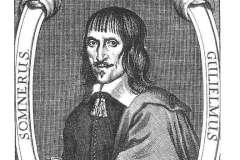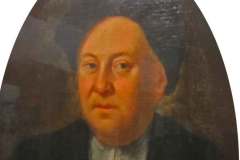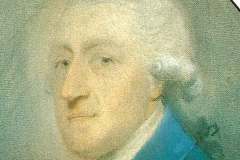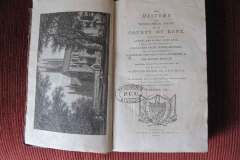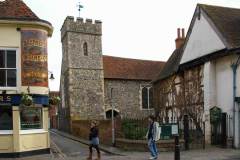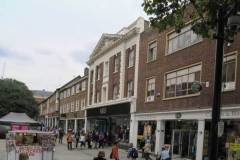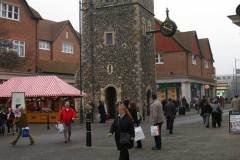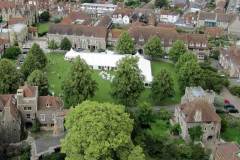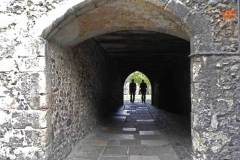(1732-1812) Antiquarian and Writer
Three writers have left us detailed descriptions of pre-Victorian Canterbury: William Somner, Edward Hasted and William Gostling (Images 1 to 3). All three lived in Canterbury at some stage in their lives, and two (Hasted and Gostling) lived in the precincts of the cathedral. Of the three, Edward Hasted led by far the most exotic lifestyle, and only he has attracted two hard back biographies and articles in Archaeologia Cantiana. Whilst Somner and Gostling focused on Canterbury city, Hasted’s studies covered Kent as a whole.
Edward Hasted was born in London in 1732, only son of a wealthy country gentleman of the same name. By the time Edward had finished his education (including King’s School Rochester, Eton and Lincoln’s Inn), his father had died, forcing the family to move to Chatham. Edward married Ann Dormon in 1755 against his mother’s wishes – she did not attend the wedding. He spent the first two years of married life in Canterbury, followed by 11 years in a country house outside Dartford, 22 years back in Canterbury, then five years with his mistress in northern France escaping his creditors, and seven years in King’s Bench prison for debt. His final years were spent in relative poverty in London and Corsham, Wiltshire where he died in 1812, being placed in an unmarked grave. Edward devoted nearly 40 years of this life collecting material for his History of Kent, which appeared in four large format folio volumes, the last in 1799. These sets currently sell for around £3000. A revised second edition, in 12 smaller format octavo volumes, had appeared by 1801; volumes 11 and 12 together cover Canterbury (Image 4).
Edward’s Canterbury links can be summarised as follows:
- The Hasted family had Canterbury roots. Edward’s great-grandfather Moses Hasted appears in the St Peter’s marriage register for 1657, marrying a Mary Goslinge (no known links to the family of the writer William Gostling). Their son Thomas was christened in the same church in 1665 (Image 5).
- During his first Canterbury stay (1755-1757) Edward lived with his new wife and two maid-servants in a part of the city known as ‘Without Riding Gate’ – probably in what is now Old Dover Road.
- His second Canterbury spell (1768-1790) was spent in a house ‘with large stables and coach house’ situated on the south side of St George’s Street – now part of the Whitefriar’s development (Image 6). St George’s baptismal registers include entries for the Hasted’s 7th, 8th and 9th children John Septimus, Joseph and Mary; also burial entries for Joseph and Mary who both died in infancy (Image 7).
- In 1770 Edward took a lease on a house in the cathedral precincts, facing the Green Court (Image 8) for use by his mother, who moved there to live with Edward’s daughter Anne, plus ‘two maids and foot boy in livery’. It is plain that his mother never approved of his wife, whilst he wrote that his mother’s ‘excessive pride, which predominated on every occasion … made most people rather disgusted with her acquaintance’.
- In 1772 Edward took a lease on a second precincts property – this time for his own use, situated near the ‘dark entry’ (Image 9).
- Registers for King’s School Canterbury confirm that three of Edward’s sons became pupils here – Edward and Francis (started 1769), George (1771) and John Septimus (1778).
- Edward relied on local printers for both editions of his History of Kent – James Simmons for the first (he opened his works on St George’s Street in 1768), and William Bristow (who had his works in the Parade) for the second.
Sources: Black (2001); Boyle (1984); Sparks (2007); Oxford Dictionary of National Biography; Arch Cant XXVI (1904) and XXVII (1905); web site theweald.com
DL

